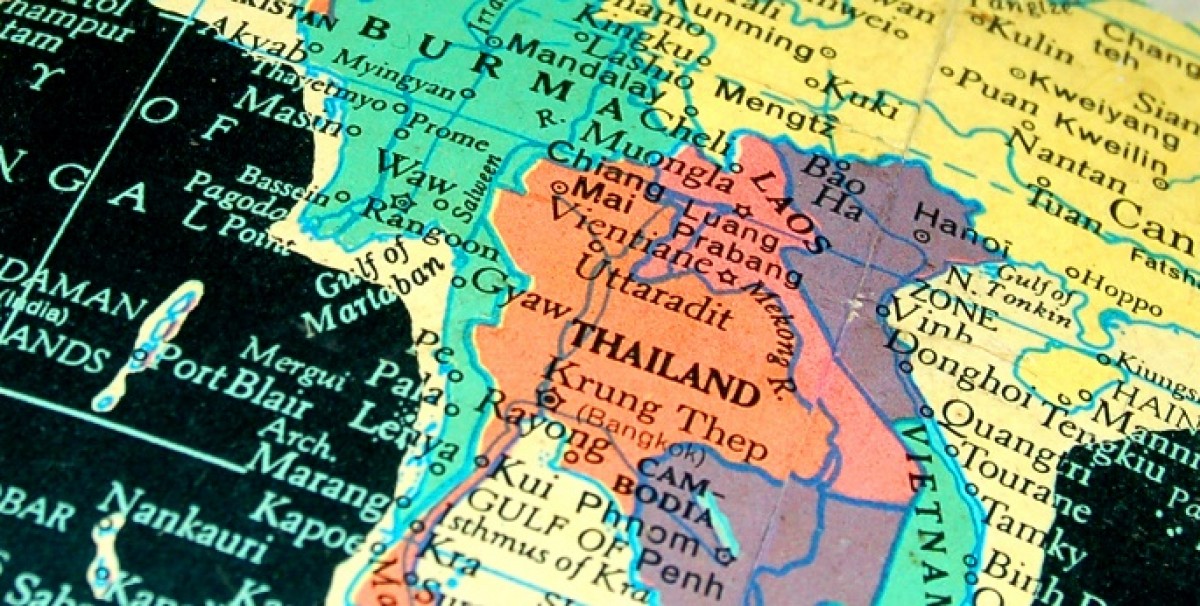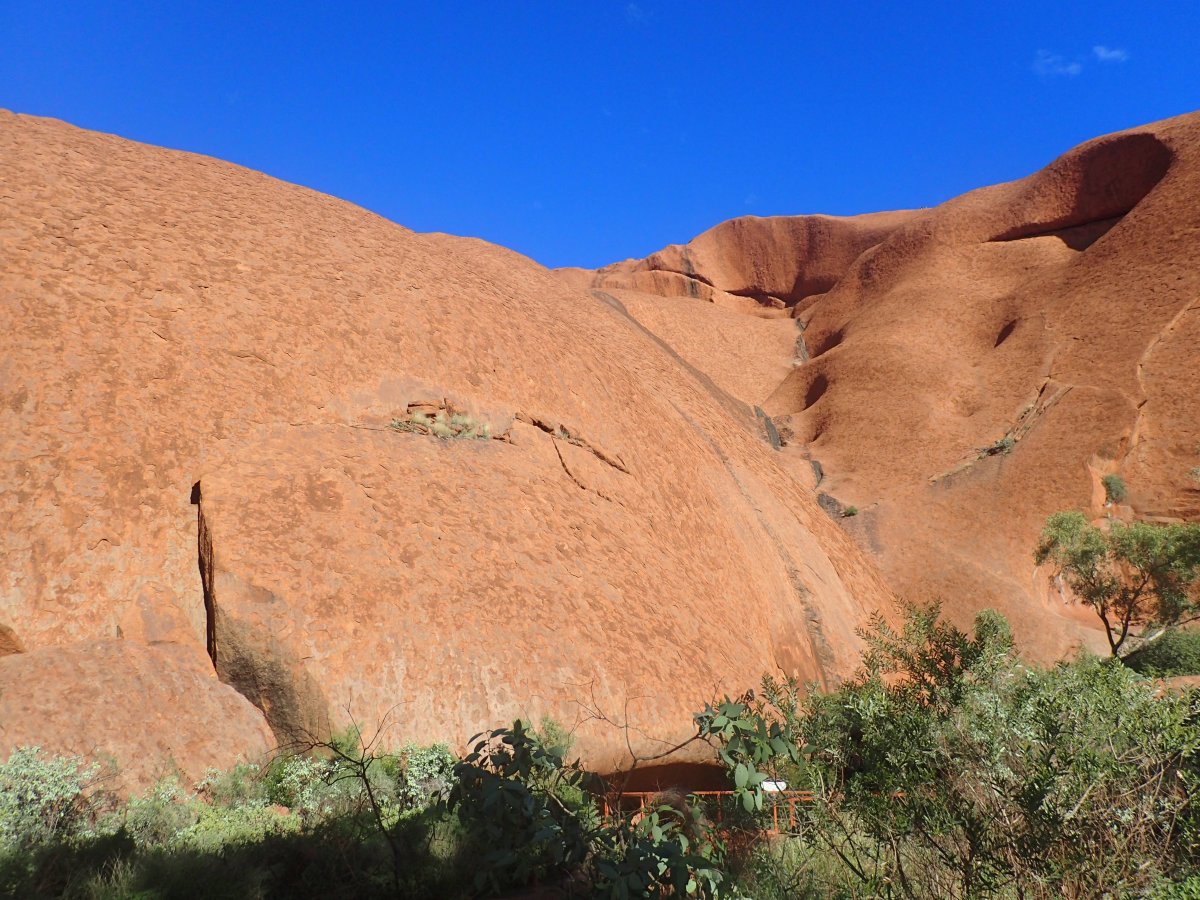After one night in Alice Springs, I was picked up for my trip to Uluru at 6am, and I saw my second consecutive sunrise from our four wheel drive tour bus as we made the [how far] drive to Uluru-Kata Tjuta National Park. The vast majority of visitors to Alice Springs are there to see Uluru, and the handful or tour companies operating there offered broadly the same package; a three-day trip to see the three geological sites of Uluru, Kata Tjuta (or the Olgas) and King’s Canyon. As Alice Springs and Uluru are so closely associated, a lot of people assume they are close together, which I suppose they are in the context of outback Australia, but they are still a good five hour drive apart. To break up the drive, we stopped along the way at a few roadhouses, which are rural, remote service stations (sometimes doubling up as caravan parks), and in this part of the outback they all had some kind of additional purpose to entertain visitors. First was Stuart’s Well, a camel farm where for $7 you could ride a camel around the yard; second was Mount Ebenezer with a nice aboriginal art gallery; and finally Curtin Springs, which as well as having a small aviary and an emu scratching around, also had the distinction of being the last place to buy alcohol before Uluru.
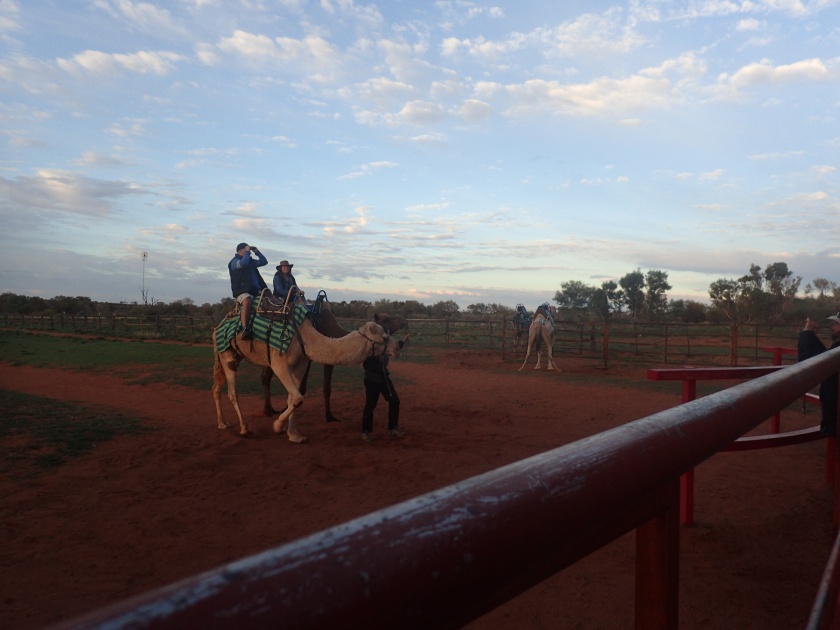
The resort settlement near the Uluru National Park is called Yulara and has pretty much every kind of accommodation you can imagine, from fancy hotels to glamping sites, hostels to caravan parks, as well as its own airport. After a quick lunch at our campsite we picked up the rest of our group from the airport and headed to the Big Rock.
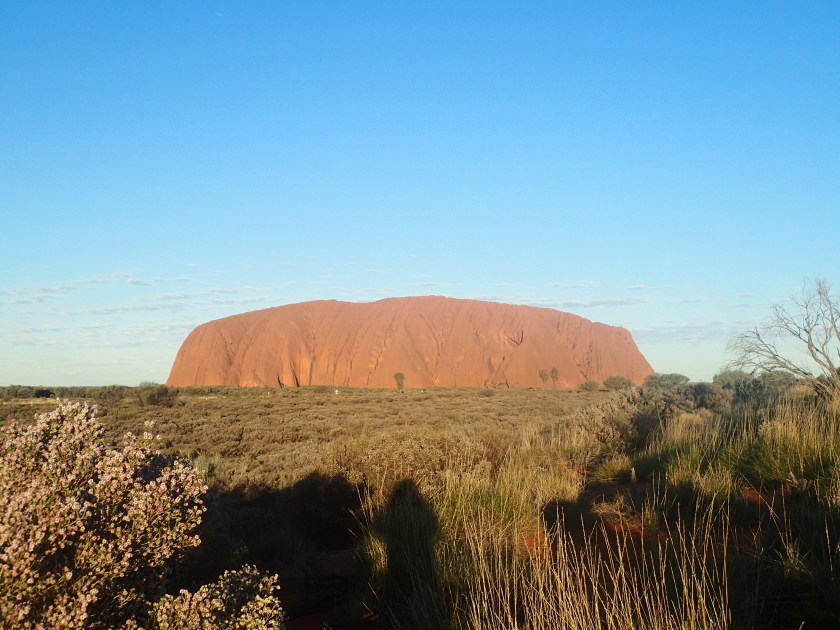
The traditional owners of Uluru are the Anangu people, and it was to this group that official ownership of Uluru was returned in 1985, after 65 years of enforced ownership by the Australian government. One of the conditions of this return was that the land would be leased back to Parks Australia, so the park is now managed by a committee comprising members of both groups. The Visitor Information exhibition focuses seeks to educate tourists about the importance of the site in the Anangu people’s tjukurpa; the collection of folklore which makes up the history, education, religion and laws of the Anangu culture. Our guide told us more about this as we walked around parts of the rock, and he told us some of the stories associated with Uluru. Interestingly, the education structure of tjukurpa is layered; children are told the simple, most basic version of a given story, to teach them a simple lesson, and as they grow up they are given more details about that same story, teaching them additional lessons as they become more mature. This process continues throughout adult life as well, so that the oldest in society have the most knowledge and wisdom, are therefore treated with a great deal of respect. As non-Anangu, we were only allowed to be told the child-level stories, but it’s fascinating to imagine how much more detailed the stories could be.
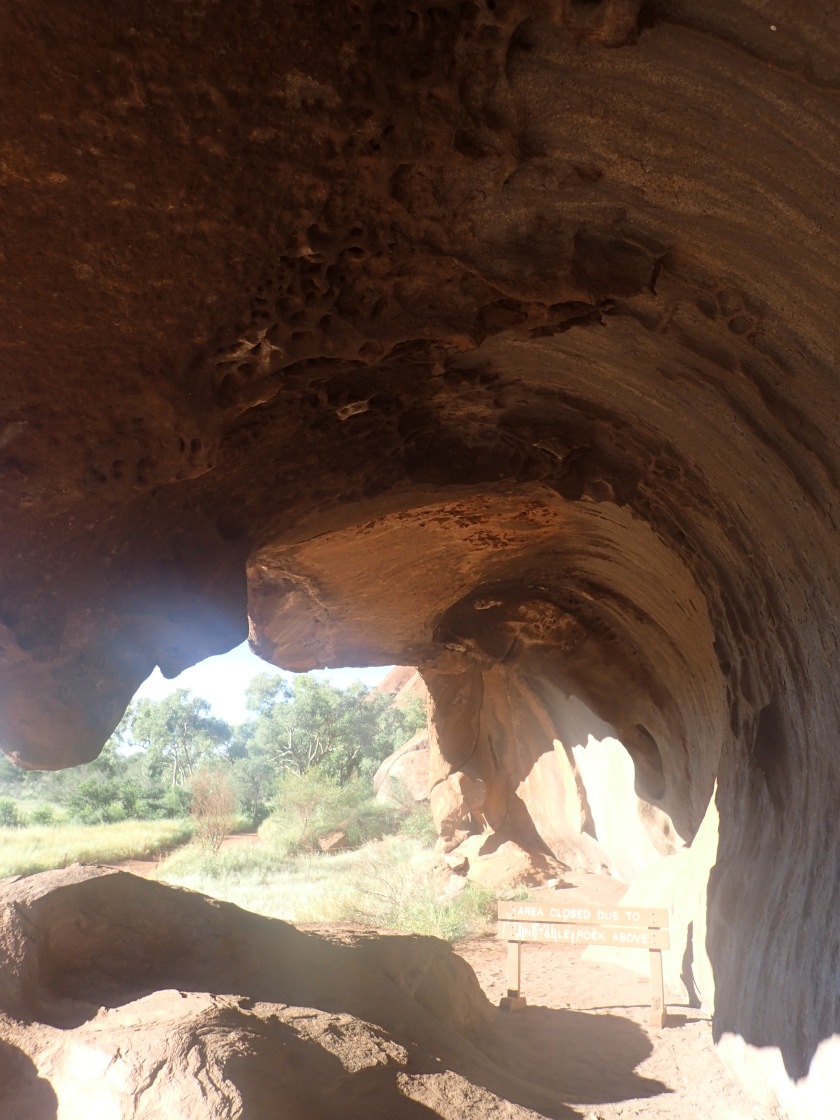
Also fascinating was the tjukuritja, the physical evidence on the landscape that back up the tjukurpa stories. All of the stories in Anangu culture have a very specific location setting, so the culture is extremely closely tied with the land and the space that people traditionally lived in. As I understand it this applies to most if not all Aboriginal cultures, which must have made the European invasion even more traumatic and culturally destructive. But it was also interesting just to look at the rock up close and notice all of these physical irregularities. As well as the fact that the outback is not barren desert but covered in tough but green plants, the texture of Uluru was a huge surprise for me. In photos I had always thought it looked quite smooth, albeit with some soft creases, a bit like a pile of books covered in a table cloth. But there’s so much more going on than that; it’s covered in interesting things to look at, from round hollows and black trails left by waterfalls in the wet season, to strata lines to wave-form caves swept out by the wind. There are valleys where you can walk into the rock, caves where you can walk under it, and I only saw a small section of it. For what is essentially just a big bit of rock, there’s a lot to look at.
Sadly, however, some people are not content just to look. When the land was given back to the Anangu people in 1985, one of the other conditions was that visitors would still be permitted to climb the rock as they pleased. This is problematic for three reasons. First, it causes environmental damage, not just in the form of erosion from thousands of footprints (a pale scar is already visible where the red top layer has been worn away to reveal the grey rock underneath; this will take thousands of years to heal), but also water contamination; for some reason people urinate (and worse) on the rock while walking up, and when it rains everything on Uluru is washed down ending up in the waterholes for miles and miles around, sometimes making them undrinkable for animals. Secondly, more than 30 people have died and many more have been injured doing this walk; as well as placing a burden on the Park authorities to rescue people, the Anangu people consider themselves personally responsible for the well-being of visitors, so it causes them unnecessary distress when accidents inevitably happen.
Finally, and most importantly, it is incredibly disrespectful to the Anangu people to climb Uluru. Not only is the whole area of extremely high religious significance, climbing the rock itself is part of a specific Anangu ritual; Anangu people do not climb it unless taking part in this ceremony. Treating such a serious and spiritually important place as a jolly jaunt to get a nice photo is akin to stomping around a cathedral, laughing, shouting and taking photos during a service. And it’s worse because, although they ask people not to, the Anangu have no choice, under the terms of the 1985 agreement, but to allow people to do it.
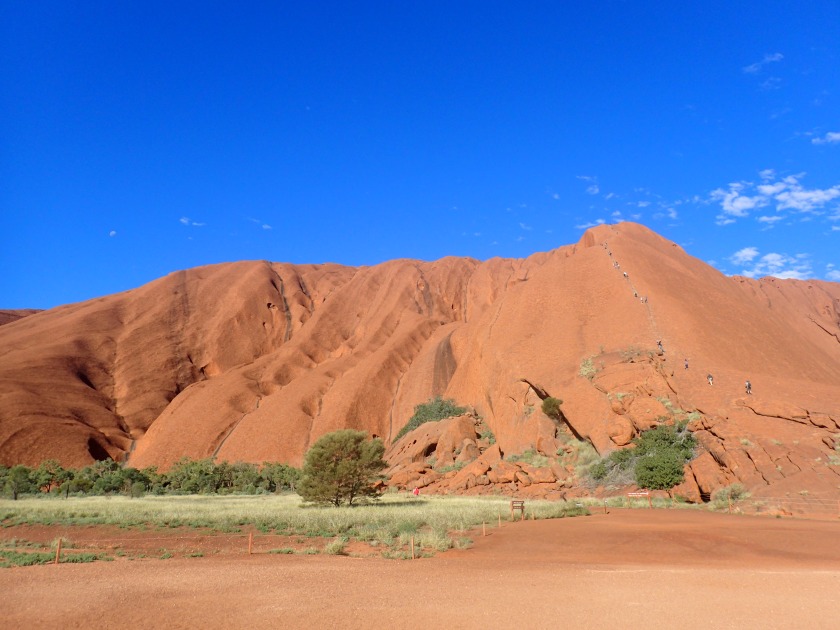
Sadly, despite the explanation in the Visitor’s Centre, and the sign at the base of the rock where the climb begins, thousands of people still climb up Uluru every year. Whether through ignorance or pig-headedness I don’t know, but it broke my heart a bit
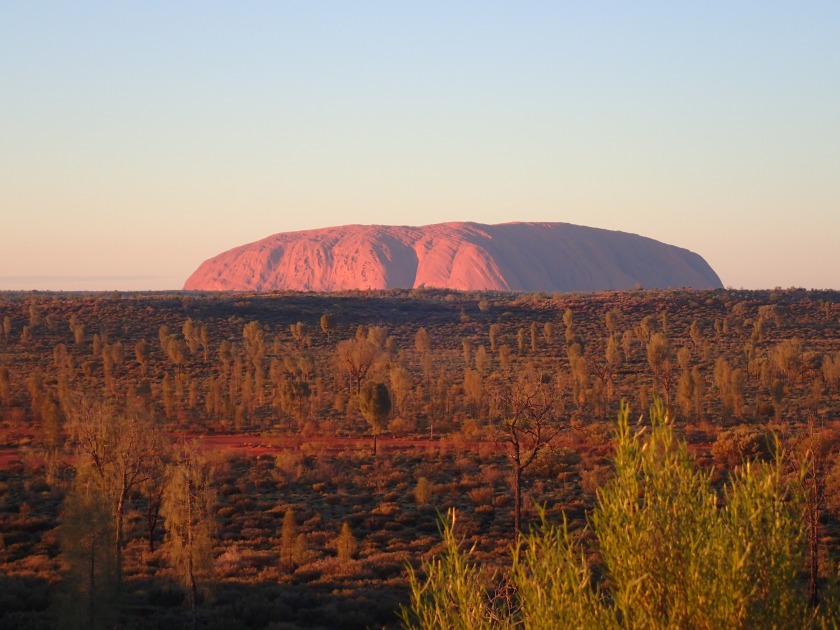
.
